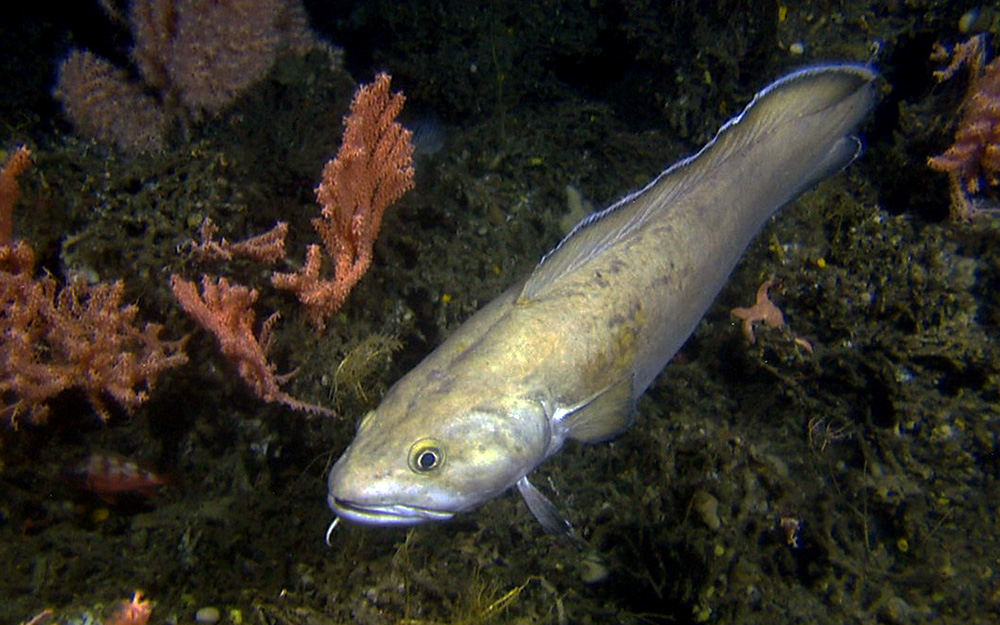Cusk
(Brosme brosme)

Classification
General data
Description
It is easily distinguished at a glance from other cod-like fish, as it has only one dorsal fin. Also characteristic of the fish is the nature of its dorsal, caudal, and anal fins; they are continuous at the base, but separated by very deep notches so that they are obviously distinct. Moreover, the caudal fin is evenly rounded. It is variable in color, from slate to reddish brown above, and paling to gray on the lower sides and underneath. Older fish are usually plain-colored, while the young often have transverse yellow bands on their sides. Their maximum length is about 4 ft (120 cm) and top weight is about 45 lb (20 kg). The IGFA world record stands at 37 lb 14 oz (17,20 kg), caught by Anders Jonasson outside Sørøya in northern Norway.
Distribution and habitat
It is distributed on both sides of the North Atlantic, mostly in moderately deep water. On the North American coast, it is regularly found southward to Cape Cod and occasionally off New Jersey. Its maximum range covers most of the North Atlantic, including the waters around Iceland and the Norwegian coast. It is also found on the Mid-Atlantic Ridge.
Cusk show little genetic differentiation over large distances, except where populations are surrounded by deep-water areas, namely on the Mid-Atlantic Ridge and the Rockall Bank. This suggests deep-water areas are barriers for adult movements, and though they have pelagic eggs and larvae, dispersal during early life stages is not effective over long distances.
It is normally found in water deeper than 600 ft (200 m), and practically always is taken over rough bottoms where rocks, ledges, or gravel are common. Good fishing areas are usually much more limited than is the case with cod, haddock, or pollock. It is an offshore fish and rarely is one taken in a harbor.
It should not be confused with the burbot, which is also called the freshwater cusk, of a different Lotidae genus.











